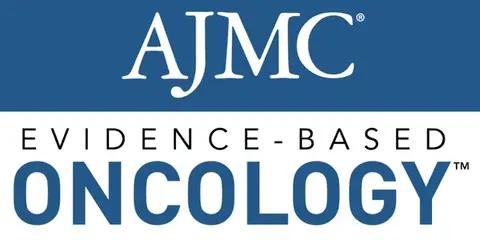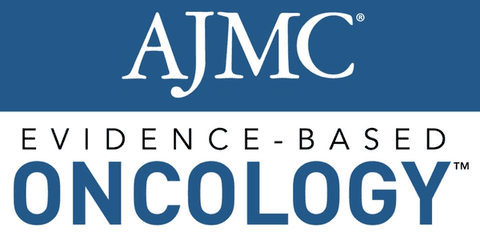Article
Twice-Yearly MRIs Superior at Finding Early Breast Cancer in High-Risk Women
Author(s):
Twice-yearly magnetic resonance imaging (MRI) scans to find early breast cancers in women with a high genetic risk are more effective than 1 mammogram, study says.
Getting magnetic resonance imaging (MRI) scans twice a year instead of 1 annual mammogram is more effective at detecting early breast cancers in young women with a high-risk genetic profile than mammograms alone, a recent study reported.
Keep up with clinical pathways news.
Researchers said the intensive efforts paid off, as the majority of participants did not develop breast cancer, despite the fact that most of these women had genetic mutations such as BRCA1 and BRCA2. Annual mammography did not demonstrate a screening benefit when performed in conjunction with bi-annual MRI screening, researchers said.
"This study demonstrates for the first time that aggressive breast cancers can be caught early, without excessive recalls or biopsies," said Olufunmilayo Olopade, MD, the Walter L. Palmer Distinguished Service Professor and Associate Dean for Global Health at the University of Chicago Medical Center, in a statement.
Current prevention options for women at high genetic risk of breast cancer include prophylactic mastectomy, prophylactic bilateral salpingooophorectomy, chemoprevention, and heightened imaging surveillance.
For this study, participants had to have a lifetime risk for breast cancer greater than 20%. The study enrolled 295 women, and of those, 157 had genetic abnormalities (75 with BRCA1, and 61 with BRCA2). They had a mean age at entry of 43.3 years.
The study also included women who had been diagnosed with breast cancer or ductal carcinoma in situ before age 35, or had a mother or sister diagnosed with breast cancer before age 50 (before 40 for those of African ancestry). All study subjects had a panel of genetic tests looking for genes associated with a predisposition to breast cancer.
After evaluation by a physician and a genetic counselor, participants were scheduled to undergo a clinical breast examination and a dynamic contrast-enhanced magnetic resonance imaging scan (DCE-MRI) every 6 months, plus a digital mammogram every 12 months. Those with high-risk mutations who completed 5 years of the study protocol were offered continued screening.
Over the course of the study, the researchers performed 2111 DCE-MRIs (on average, about 7 for each participant) and 1223 mammograms (4 per participant). They found 17 cancers: 4 ductal carcinoma in situ and 13 early stage breast cancers.
Fifteen of those cancers occurred in participants with pathogenic mutations. Eleven involved BRCA1, 3 involved BRCA2, and 1 involved CDH1. None of the cancers had spread to the lymph nodes. The mean tumor size was 0.61 centimeter (about 1/4 of an inch). All cancers detected during the study were smaller than a centimeter.
The 17 patients who developed a cancer were followed continuously for a median of 5.3 years (range 0.5 to 11 years). All are alive and free of systemic disease.
Patient anxiety levels decreased over time and patient-reported quality of life improved. The authors recommend "further interventional studies evaluating this novel screening approach to personalize breast cancer risk assessment and prevention."
"The central goal of our study was to understand the needs of the highest-risk women," said study co-author Mary Claire King, PhD, professor of genome sciences and of medicine at the University of Washington and the American Cancer Society Research Professor for Breast Cancer.
King has advocated for all women to be offered testing for BRCA1 and BRCA2 at about age 30, regardless of personal or family history of cancer, so that women with mutations can take action to prevent cancer in their futures. Insurers, however, have disagreed strongly with this assessment, saying it would lead to unnecessary downstream costs, and direct resources away from targeted efforts to match tests with patients based on risk factors.
In this study, DCE-MRI every 6 months "performed well for early detection of invasive breast cancer in genomically stratified high-risk women," said Gregory Karczmar, PhD, professor of radiology at the University of Chicago.
Mammograms are routinely used to screen for breast cancer, but they are "not the best option for about 40% of women," Karczmar said. "This includes those with dense breasts as well as those with significant genetic risks."
"MRI is much more sensitive than mammography," he added. However, the cost of MRI rules it out for routine screening, he said.
Mammograms will remain important for most women, but for women at high risk who are getting a DCE-MRI every 6 months, "annual mammograms can be eliminated," Olopade said.
A number of patients withdrew from the study within 5 years. Their primary reasons for leaving were the cost of health insurance or other payment issues; having a prophylactic mastectomy; moving away; or changing healthcare providers
Reference
Guindalini RG, Zheng Y, Abe H, Intensive surveillance with bi-annual dynamic contrast-enhanced magnetic resonance imaging downstages breast cancer in BRCA1 mutation carriers. [published online August 28, 2018]. Clin Cancer Res. doi: 10.1158/1078-0432.CCR-18-0200





